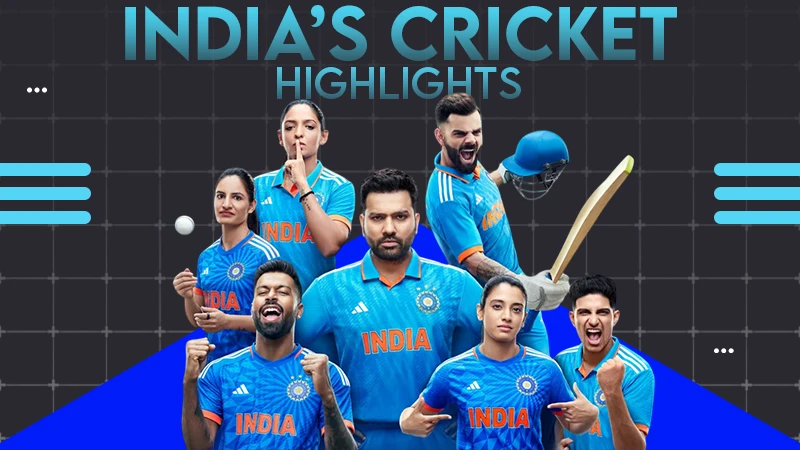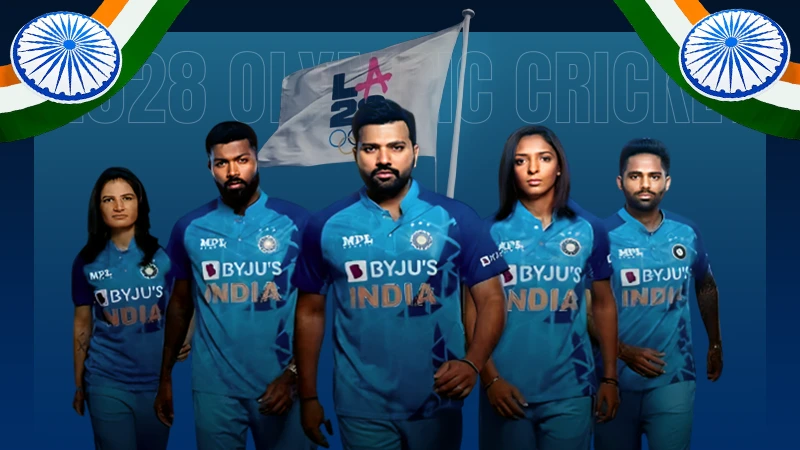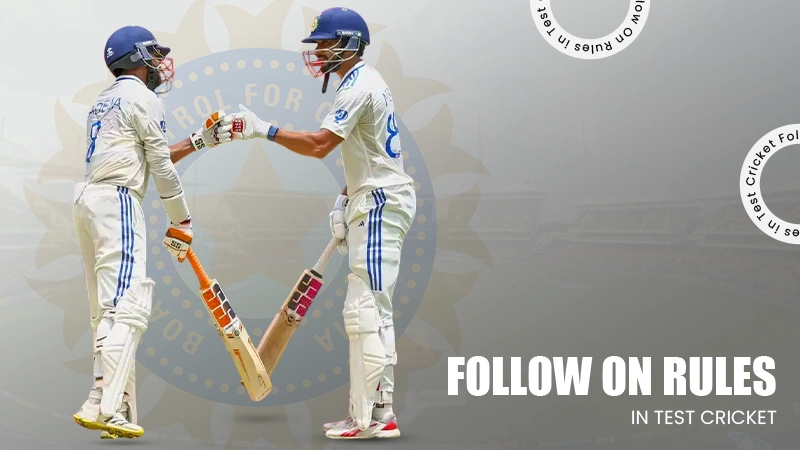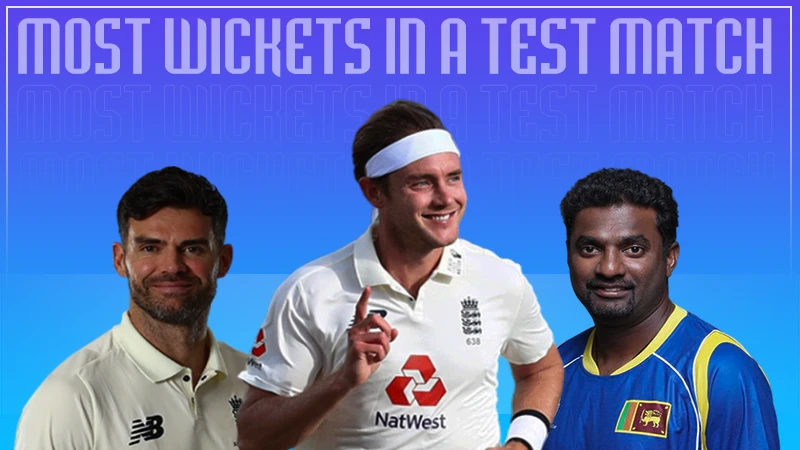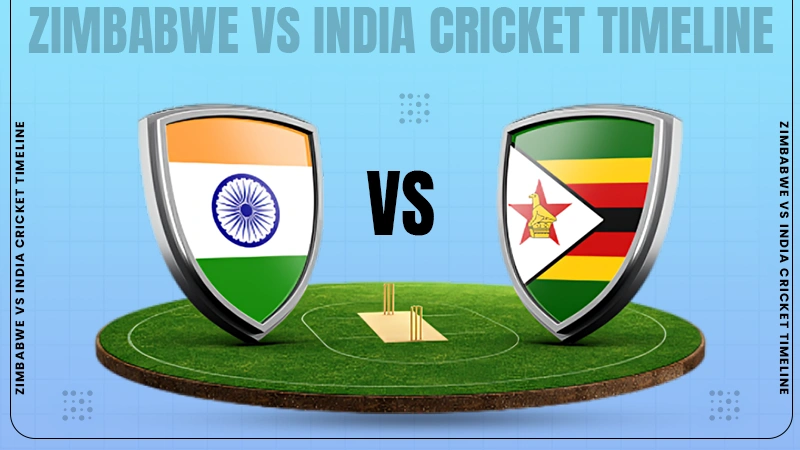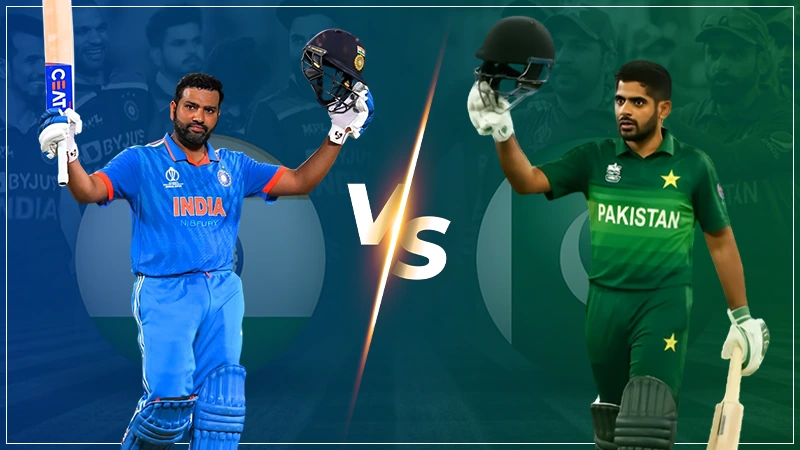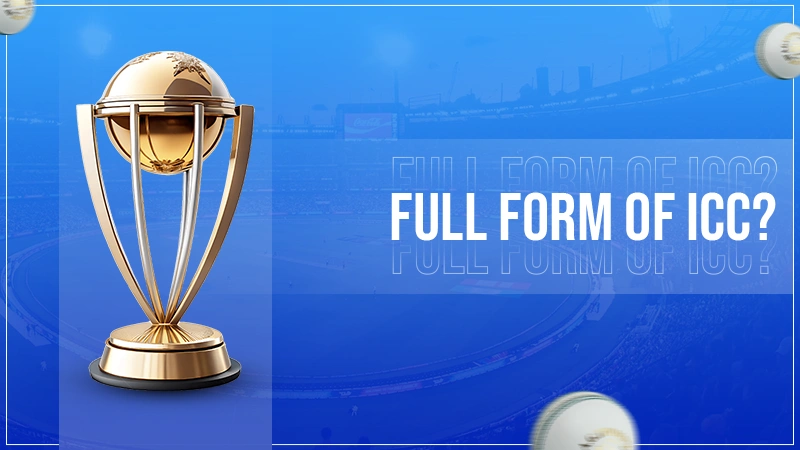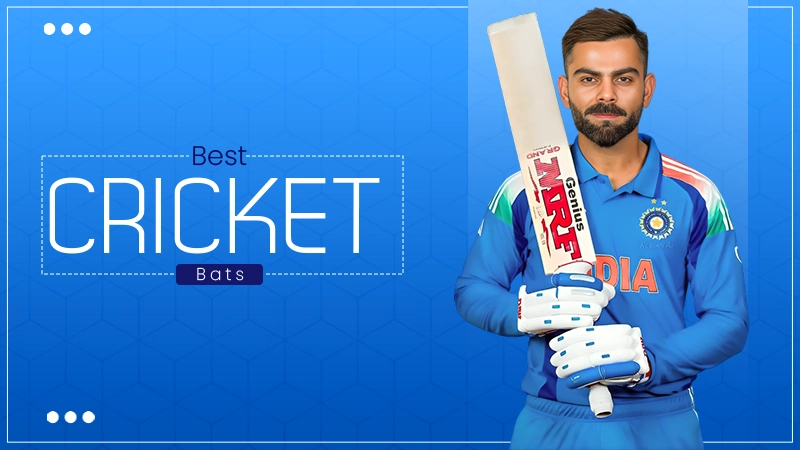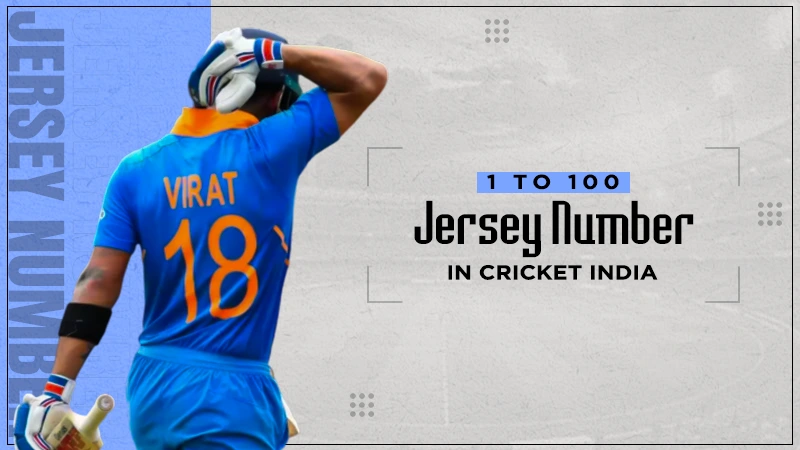
How to Become A Cricketer in 2025-26: Skills, Challenges, Salary, and Tips
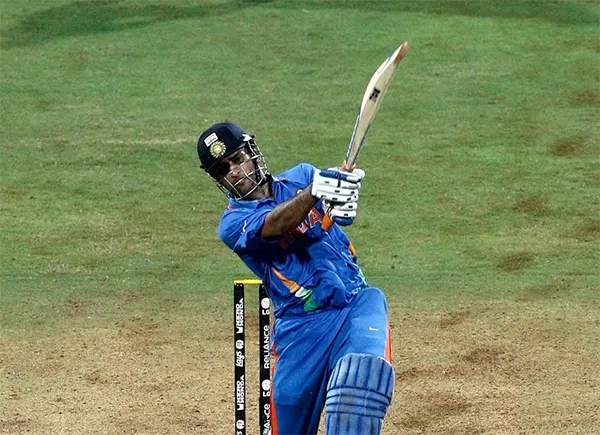
Watching Vaibhav Srivastava playing for the Rajasthan Royals, or remembering Sachin Tendulkar starting his international career at the age of 16, would have been your motivating point. If you share the same vision, then you might be wondering how to become a cricketer.
Realizing this dream of playing at an international level needs to have a firm objective with a brief plan.
To help you out in this pursuit, here we have explained an all-encompassing guide on “how to become a cricketer in 2025-26” by exploring the plan, skills required, challenges faced, and productive tips for it.
- How to Become a Cricketer: A Stepwise Blueprint
- Prerequisite Skills To Become a Cricketer
- Major Challenges in Becoming a Cricketer
- 5 Premier Cricket Academies in India
- How Much Money do Cricket Players Earn?
- Outstanding Tips for How to Become a Cricketer
- Motivation Pills to Become a Cricketer
- How to Become a Cricketer Without an Academy?
- Conclusion
- FAQs
How to Become a Cricketer: A Stepwise Blueprint
Becoming a cricketer is a multistep process, understanding which is essential to organize, strategize, and approach it. Here, we have provided you with a guide to follow to streamline your preparation for becoming a cricketer.
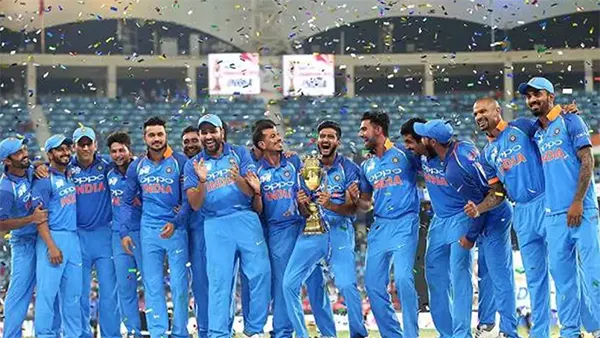
- Educational Background: Though no minimum educational qualification is required to become a cricketer, it is highly recommended to complete the elementary educational level, such as 10th and 12th grades, before dedicating time to cricket.
- Attending Certification Courses: Candidates who have attended some certification courses have better chances of getting selected in tournaments and getting shortlisted for academies. Some of these courses are:
- Cricket career preparation
- Metal toughness training for cricket
- Ultimate cricket batting course
- Online cricket mentoring course.
- Join a Good Cricket Academy: Joining a cricket academy or club will fine-tune your skills and calibrate them with contemporary cricket practices. A list of some best cricket academies is given in the sections below.
- Get a Good Coach: The coaches were the central point for Sachin Tendulkar and MS Dhoni (one of the best captains in cricket) in realizing their true potential and finding out what they can do best. You also need the guidance of a good coach to give you a personal touch in your preparation.
- Join a Professional Team: Cricket is a team game that demands individual and group skills, such as coordination with the team, managing team targets, and striving to achieve them. For this, you should join a team and learn coordination skills.
- Start with Tournaments: After attaining the age of 14–15 years, it is advised to play in any of the T20, ODI, or other format tournaments to streamline cricket skills, like Sachin Tendulkar played in the Ranji Trophy at the age of 14.
- Have Faith: Every cricketer has faced challenges and setbacks. Have faith in your caliber, upskill yourself, adapt and refine your talent, and believe in yourself.
In this endeavor, you need to have some non-negotiable qualities, which are the foundation of this process.
Prerequisite Skills To Become a Cricketer
Prominent essential skills to become a cricketer that every young cricketer should have are physical fitness, a disciplined approach, and sportsmanship. These qualities, along with others, have been mentioned and explained below to give you a comprehensive idea.
- Discipline and Hard Work: The cricket career starts at a tender age, and this requires managing the education and sports, both of which are energy-draining processes. For this, staying disciplined and persevering for a long time is necessary.
- Physical Fitness: All the roles in the cricket field start and end with extensive body movement, requiring you to be physically fit.
- Confidence and Mental Resilience: Losing a game, being set out of the selection list, and many such situations may reduce your confidence. You must deter them during your journey.
- Sportsmanship: Having a fair gameplay, respecting the opposite team, maintaining self-control and self-discipline, and bearing responsibility for the role entrusted, is what you should focus on while emphasizing sportsmanship.
- Professionalism: This gentleman’s game demands on-field and off-field professionalism to maintain discipline and commitment to the collective goals.
- Learn and Inculcate: In this sport, even the experts make mistakes. You should stay focused on finding your mistakes, improving them, and incorporating the solution in your next game.
These non-compromisable skills directly or indirectly affect your overall game. All these qualities should be supplemented by maintaining composure in and out of the field.
Major Challenges in Becoming a Cricketer
Some broad challenges in becoming a cricketer, such as financial, social, and physical, can hinder your chances of achieving your objective. These are the most common, and every cricketer has suffered at least one of them during their career.
- Financial Hurdle: Many aspiring players coming from lower and middle-class families find it hard to pay the hefty admission amount to the academies and buy the costly equipment.
- Injuries: Several times, injuries or incomplete recovery lapses have taken a toll on the performance of the sportsman, thus reducing their chances of rising high in the cricket hierarchy.
- Highly Competitive Environment: With rising awareness and easy availability of equipment and coaches, the competition in this sport has escalated to a new level.
- Balance with Education: Managing a strict sports practice schedule with studies is a humongous task to chase.
- Gender Biases (For Female players): Although the social scenario has changed a lot, some communities still consider sports as a masculine role, hindering women’s participation and burying their talent.
You must stay aware of these hurdles to bypass or neutralize them during your training days.
5 Premier Cricket Academies in India
Here is the list of the 5 best cricket academies in India, which are popular among domestic and international players. These academies provide a comprehensive environment for nurturing your talent.
- MRF Pace Foundation Academy, Chennai: It was established by MRF Ltd in 1987. The academy has 4 different pitches, a cricket stadium, a gym, a swimming pool, and advanced machines to fine-tune the players’ performance. Some of its notable alumni are Irphan Pathan, Zaheer Khan, Brett Lee (Australian bowler), and Glenn McGrath (Australian cricketer)
- National Cricket Academy, Bangalore: This academy was founded by the BCCI in 2000 to provide world-class facilities to young cricketers. Its advanced mentorship focuses on physical fitness, emphasizing sports science and medicine, and integrating technology in talent development is one of its noteworthy features. It has been a training ground for some renowned players such as Virat Kohli, Anil Kumble, Yuvraj Singh, and Jasprit Bumrah.
- Sonnet Cricket Club, Delhi: It came into being in 1969 under the guidance of Tarak Sinha, the renowned coach. The catalog of its alumni, which includes Virendra Sahewag, Shikhar Dhawan, and Rishabh Pant, has given it the title of “factory of cricketers.”
- Abhimanyu Cricket Academy, Dehradun: This cricket academy was established by R.P. Easwaran. In collaboration with the Asian School, Abhimanyu Cricket Academy operates as a National school of cricket. It has brough some amazing domestic players into the Indian cricket team.
- LB Shastri Cricket Club, Delhi: It was founded by Dr. Sanjay Bhardwaj (Dronacharya Awardee) in 1996. It has produced prominent cricketers, like Gautam Gambhir. The incorporation of advanced sports machines such as video analysis systems and bowling machines has been instrumental in enhancing the practice experience of cricketers.
Now, you might be wondering how much a cricketer earns from his matches.
Let’s figure out.
How Much Money do Cricket Players Earn?
The salary of the cricketers varies based on the format and the tournaments, and the gender of the player, which ranges from 20,000 to crores.
To give you a rough estimate, here are the salary figures of the cricketers exhibited in the tables below.
For the Domestic Games (Male Players)
| Category | Salary (Per Match) |
| Senior Players (Ranji/Duleep Trophy) | ₹60,000 |
| U-23 Players | ₹25,000 |
| U-19 Players | ₹20,000 |
| U-16 Players | ₹7,000 |
For the International Games (Male Players)
| Player’s Grade | Salary (Per Annum) |
| Grade A+ | Rs 7 crores |
| Grade A | Rs 5 crores |
| Grade B | Rs 3 crores |
| Grade C | Rs 1 crore |
Salary for Female Cricketers (Old Scheme)
| Type of Payers | Payer’s Category | Salary (Per Annum) |
| Domestic Players | Senior Women’s Players | ₹20,000 |
| International Players | Grade A Women’s Players | Rs 50 lakhs |
| Grade B Women’s Players | Rs 30 lakhs | |
| Grade C Women’s Players | Rs 10 lakhs |
Salary of Female Players in the International Game (New Scheme)
| Game Format | Salary per game (in Rs.) |
| Test Match | 15 Lakh |
| ODI | 6 Lakh |
| T20 | 3 Lakh |
IPL Salary 2025
| Players | Salary (in Rs.) | |
| Maximum Paid Player | Risahbh Panth | 27 cr. |
| Minimum Paid Player | Aryan Juyal, Atharva Taide, etc. | 30 lakhs |
Outstanding Tips for How to Become a Cricketer
Analyzing the top cricketers, we come across some common suggestions from the top players that have been instrumental in their journey. Condensing and combining these suggestions has led us to some very important tips to help you become a cricketer without an academy.
Here is a digest of those tips that will help you become a cricketer in 2025-26.
- Focus on Health and Fitness: The entire cricket game requires a fit body, be it the batsman running between the wickets, the bowler taking the pace, or the fielder chasing the ball.
- Maintain a Diet: A good diet is highly important for keeping the body and the mind fit.
- Learn and Improve: With every match, you would learn something new or discover something amazing. Learn them and apply them to your next game.
- Participate in Tournaments: Don’t wait to play a game at a higher level. Begin with what level you get a chance at, be it school level, society level, or college level.
- Keep hustling: Big things demand time and effort, and most importantly, perseverance to persist amid the odds. And cricket is one such thing that tests you before awarding the fruit.
If you are struggling in your journey, you are not alone. Even some top players have gone through the worst times before tasting success.
Motivation Pills to Become a Cricketer
The cricket career is not simple or smooth for all players. Most of the glittering cricket stars have gone through early life struggles to reach their current position.
Below are some of them who will inspire you in your journey.
- Mahendra Singh Dhoni: He hails from a middle-class family and worked as a ticket collector. But his determination led him to become a household name.
- Ravindra Jadeja: Jadeja belongs to a lower-middle-class family of Gujarat. Still became a decisive player in the international cricket team of India.
- Hardik Pandya: He came from a financially weak family, and still made it to international cricket along with his brother Krunal Pandya.
- Umesh Yadav: His father was a coal miner and was not financially strong. Defying all hurdles, he became one of the best bowlers in the Indian cricket team.
- Harbhajan Singh: He belongs to a small village in Punjab. His firm determination and grit enabled him to reach the zenith.
There are other names as well, such as Rinku Singh, Yousuf Pathan, Muhammad Shami, and many more. The recent rise of Vaibhav Suryavanshi in the IPL is also a triggering point.
How to Become a Cricketer Without an Academy?
To become a cricketer, without an academy, you should start playing at whatever level or club you get a chance to play at and fine-tune your skills through the various sources available.
However, it demands a diligent effort, but it is not impossible to become a cricketer without an academy. Some such shining star in this league is Umesh Yadav, who hasn’t been to any academy and still became a cricket icon.
Moving in the same direction, below are some beneficial suggestions to become a cricketer without any academy.
- Join a Local Club: The local cricket clubs and teams are the best available opportunity to utilize to brush up your skills. Play with other local teams to gain experience.
- Participating in School or College Matches: Playing at interschool, regional, intervarsity, or other levels will also boost your talent.
- Utilize Knowledge Resources: Several YouTube channels, WhatsApp groups share valuable tricks and knowledge
- Practice at Home: Utilising free time by practicing at home will be highly beneficial. Performing short ball drills, power hitting drills, wall bounce drills, etc, are a good option for it.
- Observe Cricket Matches: Watching live matches or match highlights will help you understand the psychological part of the game, i.e., strategising the game for the best outcomes. You can also learn about new skills and tactics from such matches.
- Getting Sponsorship and Scholarship: The best-performing kids easily get scholarships and sponsorships, which support the players’ endeavors by facilitating professional assistance.
Conclusion
Summarizing the above aspects, it is self-explanatory that an admixture of a clear objective, a holistic plan, and grit to achieve it is required to answer “how to become a cricketer”. Besides, financial support and maintaining fitness are secondary to this process. But having faith in yourself is what is direly needed.
Remember.
Talent is always recognized.
Next Read: 3 Reasons Why Cricket Is Such An Exciting Game for Indian Fans
FAQ
Ans: The best age for cricket is around 10 years. The earlier you start, the better your chances will be.
Ans: More than 1500 cricketers apply for IP in every session. However, around 500 are shortlisted for the auction.
Ans: To play Ranji Trophy, the qualifying criteria are 1750 runs for the batsman, 75 wickets for the bowler, and 1100 runs with 45 wickets for an all-rounder player.
Ans: Virat Kohli started playing cricket at a very early age and played his first domestic cricket at the age of 18.

